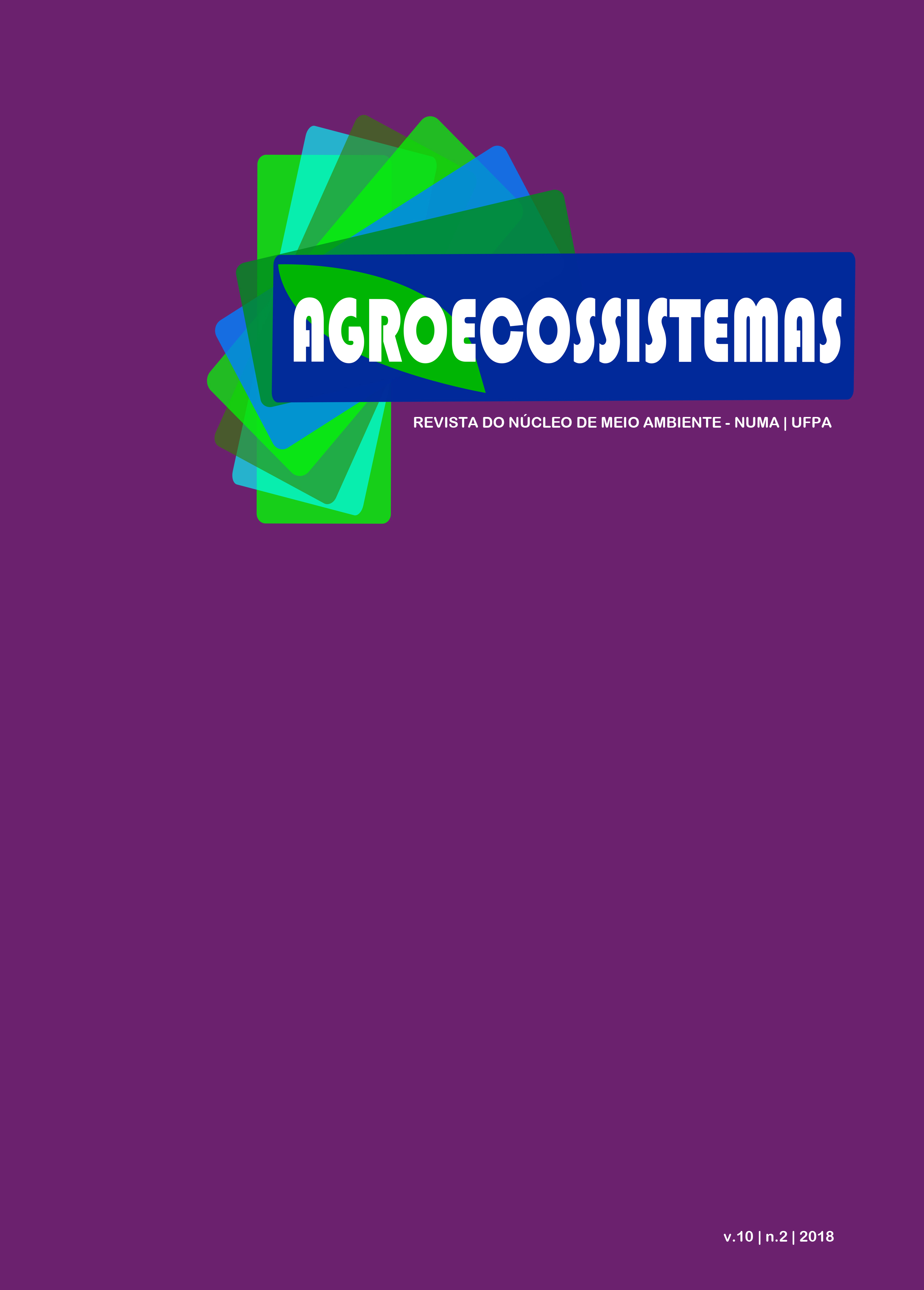ORGANIC MATTER AND PHYSICAL-WATER ATTRIBUTES OF AN OXISOL UNDER DIFFERENT MANAGEMENT SYSTEMS
DOI:
https://doi.org/10.18542/ragros.v10i2.5134Abstract
The knowledge of the physical quality of the soil of cultivated systems is fundamental to know the level of alteration of the ecosystems, to subsidize management practices that increase the productivity of the plantations and conservation measures. Thus, the objective of this study was to evaluate the organic matter and the physical-water attributes of a Yellow Latosol with a sandy-loam texture of an experimental area of the Belém Campus of the Federal Rural University of Amazonia under four management systems: Silvopastoril composed of trees of rubber tree, brachiaria grass and equines; (2) Monoculture of açaí; (3) Area of fallow crop of approximately 10 years (4) Fragment of successional forest with approximately 30 years. In each system 10 undisturbed samples and 10 deformed samples were collected at depths 0-10, 10-20 and 20-40 cm and the following variables were determined: organic matter; soil density and total porosity. In the field and per system, 10 tests of resistance of the soil to the penetration and infiltration of water in the soil were performed. Pousio favored the occurrence of lower soil density and soil resistance to penetration and greater total porosity in the superficial layer, as well as greater infiltration of water in the soil, compared to the silvipastoral and monoculture systems of açaí, due to the accumulation of matter in the first few centimeters deep. However, the sivipastoral and monoculture systems of açaí and fallow did not present physical limitations, based on soil density and soil resistance to penetration.KEYWORDS: Açai culture, Fallow, Physics of the soil, Silvipastoral system.Downloads
Published
2018-11-19
Issue
Section
Artigos Científicos


